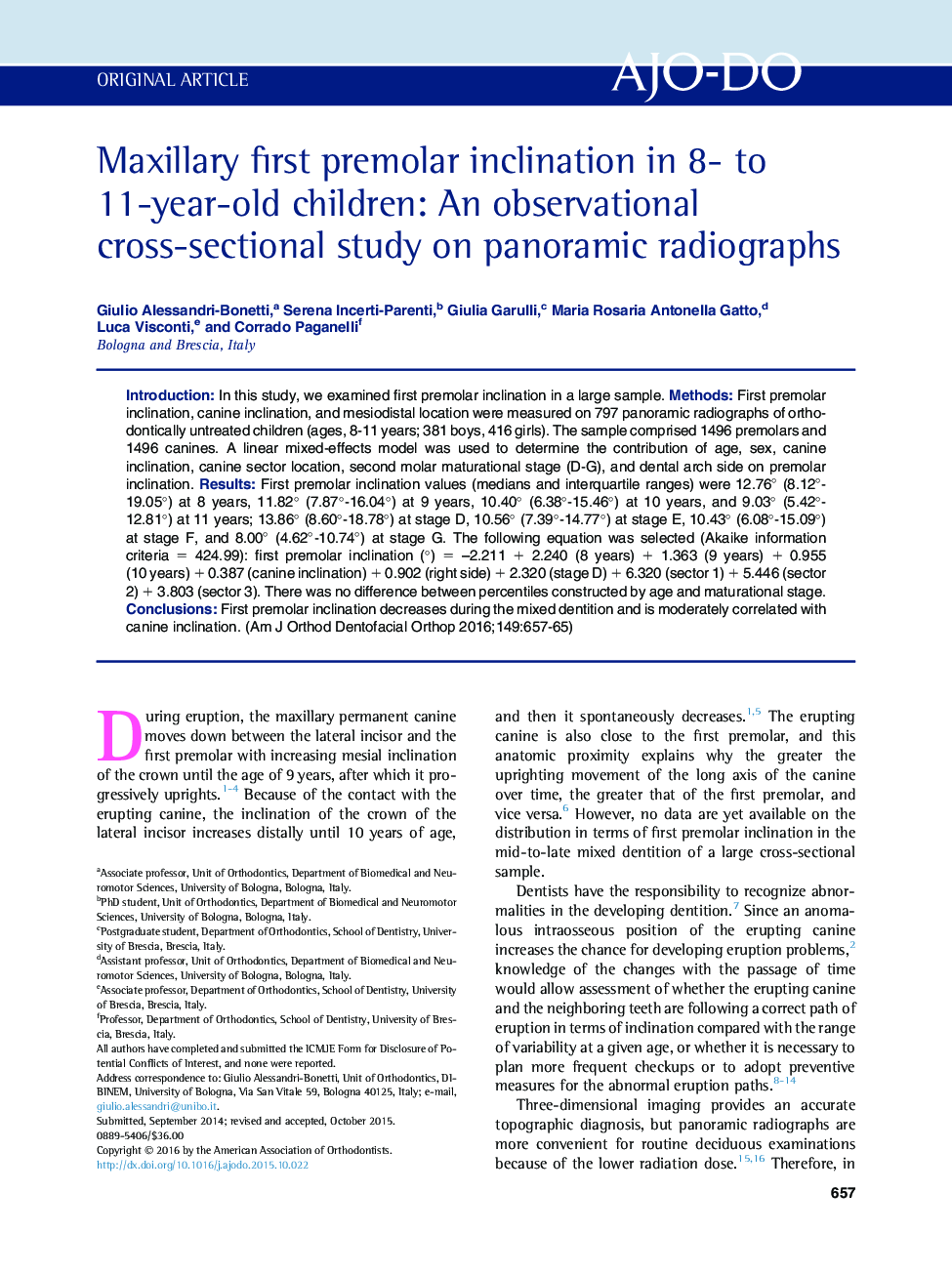| Article ID | Journal | Published Year | Pages | File Type |
|---|---|---|---|---|
| 3115298 | American Journal of Orthodontics and Dentofacial Orthopedics | 2016 | 9 Pages |
•Percentiles by age were computed for first premolar inclination (FPI).•Percentiles by maturation of the mandibular second molar were computed for FPI.•There was no difference between the distributions of these percentiles.•Canine inclination and sector location significantly influenced FPI.•FPI decreases progressively from 8 to 11 years of age.
IntroductionIn this study, we examined first premolar inclination in a large sample.MethodsFirst premolar inclination, canine inclination, and mesiodistal location were measured on 797 panoramic radiographs of orthodontically untreated children (ages, 8-11 years; 381 boys, 416 girls). The sample comprised 1496 premolars and 1496 canines. A linear mixed-effects model was used to determine the contribution of age, sex, canine inclination, canine sector location, second molar maturational stage (D-G), and dental arch side on premolar inclination.ResultsFirst premolar inclination values (medians and interquartile ranges) were 12.76° (8.12°-19.05°) at 8 years, 11.82° (7.87°-16.04°) at 9 years, 10.40° (6.38°-15.46°) at 10 years, and 9.03° (5.42°-12.81°) at 11 years; 13.86° (8.60°-18.78°) at stage D, 10.56° (7.39°-14.77°) at stage E, 10.43° (6.08°-15.09°) at stage F, and 8.00° (4.62°-10.74°) at stage G. The following equation was selected (Akaike information criteria = 424.99): first premolar inclination (°) = –2.211 + 2.240 (8 years) + 1.363 (9 years) + 0.955 (10 years) + 0.387 (canine inclination) + 0.902 (right side) + 2.320 (stage D) + 6.320 (sector 1) + 5.446 (sector 2) + 3.803 (sector 3). There was no difference between percentiles constructed by age and maturational stage.ConclusionsFirst premolar inclination decreases during the mixed dentition and is moderately correlated with canine inclination.
